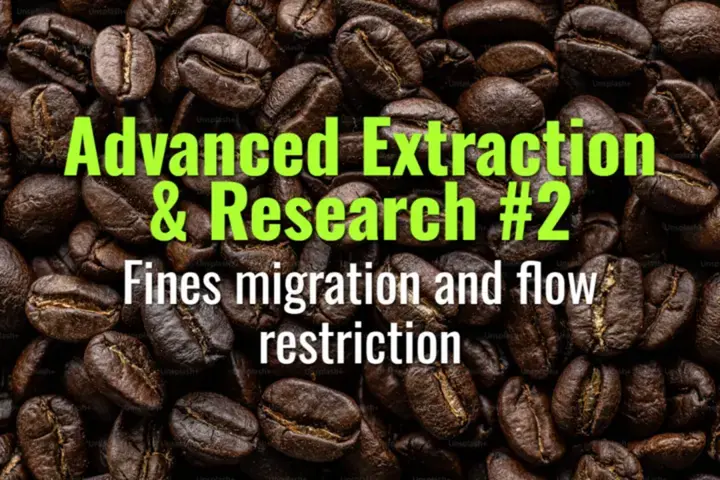Fines migration and flow restriction
How fines migration—the movement of tiny coffee particles during extraction—affects flow restriction, channeling, and cup quality.
- Coffee Basics Nerds
- 2 min read
Article 2 of 12 in Advanced Extraction & Research/

What Are Fines?
- Fines are the smallest particles produced during grinding.
- They have disproportionately large surface area → extract quickly and contribute bitterness.
- Typically settle in lower layers of the puck due to water movement.
Fines Migration
- During preinfusion and extraction, water flow pushes fines downward.
- They accumulate at the bottom of the puck, creating a dense, low-porosity layer.
- This bottom layer acts as a filter, restricting flow.
Flow Restriction
- Benefits:
- Prevents water from passing too quickly, enhancing contact time.
- Helps build pressure and crema in espresso.
- Risks:
- Over-concentration of fines leads to uneven flow and higher channeling risk.
- Can cause early blonding or sudden spurts in extraction.
Research Insights
- Imaging and flow models show fines concentrate near the puck base.
- Puck resistance increases over time, not just from compression but also fines packing.
- This dynamic explains why espresso flow often slows mid-shot.
Practical Implications for Baristas
- Grind Setting: Too fine → excessive fines → clogging and uneven extraction.
- Distribution & Tamping: Even puck density reduces uneven fines migration.
- Preinfusion: Gentle water ramp-up helps fines settle uniformly.
- Filter Basket Design: Hole size/pattern influences fines retention.
Summary
Fines migration is a natural part of espresso extraction, where tiny particles drift downward and restrict flow. While moderate restriction aids in pressure buildup and extraction balance, excessive fines cause channeling, uneven flow, and bitterness. Managing grind, puck prep, and preinfusion helps control this phenomenon for more consistent shots.